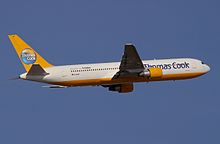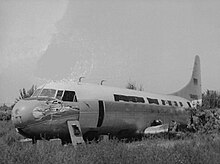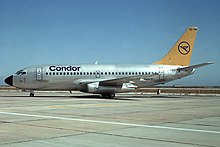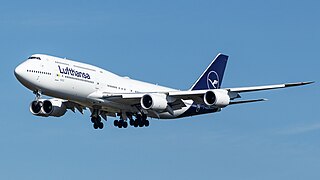
Deutsche Lufthansa AG, trading as the Lufthansa Group, is a German aviation group. Its major and founding subsidiary airline Lufthansa Airlines, branded as Lufthansa, is the flag carrier of Germany. It ranks second in Europe by passengers carried, as well as largest in Europe and fourth largest in the world by revenue. Lufthansa Airlines is also one of the five founding members of Star Alliance, which is the world's largest airline alliance, formed in 1997. Lufthansa was founded in 1953 and commenced operations in April 1955.

Swiss International Air Lines AG, stylized as SWISS, is the flag carrier of Switzerland and a subsidiary of the Lufthansa Group, as well as a Star Alliance member. It operates scheduled services in Europe and to North America, South America, Africa and Asia. Zurich Airport serves as its main hub and Geneva Airport as its secondary hub.

Monarch Airlines, simply known as Monarch, was a British charter and scheduled airline founded by Bill Hodgson and Don Peacock and financed by the Swiss Sergio Mantegazza family. The company later became a low-cost airline in 2004 before abandoning charter flying completely. The airline's headquarters were based at London–Luton, and it had operating bases at Birmingham, Leeds/Bradford, London–Gatwick and Manchester.
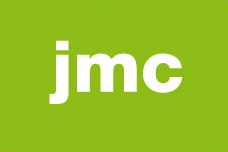
JMC Airlines Limited was a charter airline in the United Kingdom formed by the merger of Caledonian Airways and Flying Colours Airlines, following the purchase of Thomas Cook & Son by the Carlson Leisure Group. JMC Air primarily served the Thomas Cook holidays brand and was rebranded in March 2003 to Thomas Cook Airlines UK.

Thomas Cook Airlines Limited was a British charter and scheduled airline headquartered in Manchester, England. It was founded in 2007 from the merger of Thomas Cook Group and MyTravel Group, and was part of the Thomas Cook Group Airlines. It served leisure destinations worldwide from its main bases at Manchester Airport and Gatwick Airport on a scheduled and charter basis. It also operated services from eight other bases around the United Kingdom. Thomas Cook Group and all UK entities including Thomas Cook Airlines entered compulsory liquidation on 23 September 2019.
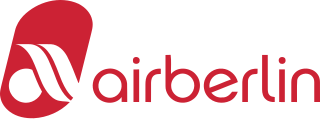
Air Berlin plc & Co. Luftverkehrs KG, branded as airberlin or airberlin.com, was a major German airline. At its peak, it was Germany's second-largest airline after Lufthansa, as well as Europe's tenth-largest airline in terms of passengers carried. It was headquartered in Berlin and had hubs at Berlin Tegel Airport and Düsseldorf Airport. At the time of its insolvency, it was a member of the Oneworld airline alliance, having joined in 2012.

Interflug GmbH was the national airline of East Germany from 1963 to 1991. Based in East Berlin, it operated scheduled and chartered flights to European and intercontinental destinations out of its hub at Berlin Schönefeld Airport, focusing on Comecon countries. Interflug also had significant crop dusting operations. Following German reunification, the company was liquidated.
Société Aircalin, also known as Air Calédonie International, is the flag carrier of the French collectivity of New Caledonia, with its headquarters in Nouméa. It operates scheduled services from its main hub at La Tontouta International Airport to destinations across Oceania and Asia, as well as domestic services in Wallis and Futuna. The airline is 99% owned by the Government of New Caledonia, with the remaining 1% held by minority owners, including the airline's employees.

JSC Uzbekistan Airways, operating as Uzbekistan Airways, is the flag carrier of Uzbekistan, headquartered in Tashkent. From its hub at Islam Karimov Tashkent International Airport, the airline serves a number of domestic destinations; the company also flies international services to Asia, Europe and North America.
MyTravel Airways Limited was a British scheduled and charter airline with headquarters in Manchester, England. It operated worldwide holiday charter services mainly for its parent company, the MyTravel Group. The airline merged with Thomas Cook Airlines UK Limited in 2008 and was renamed Thomas Cook Airlines Limited.

Eurowings GmbH is a German low-cost carrier headquartered in Düsseldorf, North Rhine-Westphalia, and a wholly owned subsidiary of the Lufthansa Group. Founded in 1996, it serves a network of domestic and European destinations and maintains bases at several airports throughout Germany, Austria, and the Czech Republic. As of 2024, it its the largest low-cost-carrier on the German market.

Edelweiss Air AG is a Swiss leisure and charter airline and the sister company of Swiss International Air Lines and a subsidiary of the Lufthansa Group. It operates flights to European and intercontinental destinations from its base at Zurich Airport.

Titan Airways Limited is a British charter airline based at London Stansted Airport. The carrier specialises in short-notice ACMI and wet lease operations, as well as ad-hoc passenger and cargo charter services to tour operators, corporations, governments, and the sports and entertainment sectors. The company holds a United Kingdom Civil Aviation Authority Type A Operating Licence, permitting it to carry passengers, cargo and mail, on aircraft with 20 or more seats.

Austrian Airlines AG, often shortened to Austrian or AUA, is the flag carrier of Austria and a subsidiary of Lufthansa, the flag carrier of Germany. The airline is headquartered on the grounds of Vienna International Airport in Schwechat where it also maintains its hub. As of July 2016, the airline flew to six domestic and more than 120 international year-round and seasonal destinations in 55 countries and is a member of the Star Alliance.

Brussels Airlines is the flag carrier and largest airline of Belgium, based and headquartered at Brussels Airport. It operates to over 100 destinations in Europe, North America and Africa and also offers charter services, maintenance and crew training. It is a member of the Star Alliance as well as the International Air Transport Association. The airline's IATA code SN is inherited from its predecessors, Sabena and SN Brussels Airlines. Brussels Airlines is part of the Lufthansa Group. The company slogan is ′You’re in good company′.

As of January 2025, the Delta Air Lines fleet consists of 986 mainline aircraft, making it the second largest commercial airline fleet in the world, after United Airlines. Delta Air Lines operates a fleet manufactured by Airbus and Boeing.
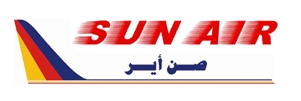
Sun Air is a private airline based in Khartoum, Sudan. As of October 2021, according to its website, Sun Air operates scheduled domestic flights between Khartoum and several domestic destinations. It also operates scheduled international flights between Khartoum and other cities in Africa and the Middle East.
Lufthansa operates a mainline fleet of 296 aircraft, consisting of Airbus narrow and wide-body and Boeing wide-body aircraft. The mainline fleet is composed of seven different aircraft families: the Airbus A320 and A320neo families, Airbus A330, Airbus A340, Airbus A350, Airbus A380, Boeing 747 and Boeing 787. This list excludes Lufthansa brand subsidiaries Lufthansa CityLine, Lufthansa City Airlines and Lufthansa Cargo.
Thomas Cook Aviation GmbH was a German leisure airline launched in 2017 and a technical subsidiary of Condor. It operated scheduled flights exclusively on behalf of Condor to destinations throughout Europe, from its bases in Düsseldorf and Leipzig/Halle. In April 2020, the airline filed for insolvency.

Discover Airlines, legally incorporated as EW Discover GmbH and formerly branded Eurowings Discover, is a German leisure airline headquartered in Frankfurt, Hesse. It is owned by the Lufthansa Group and serves leisure destinations around the Mediterranean, North America, Black Sea, Africa and the Caribbean from its bases at Frankfurt Airport and Munich Airport.







